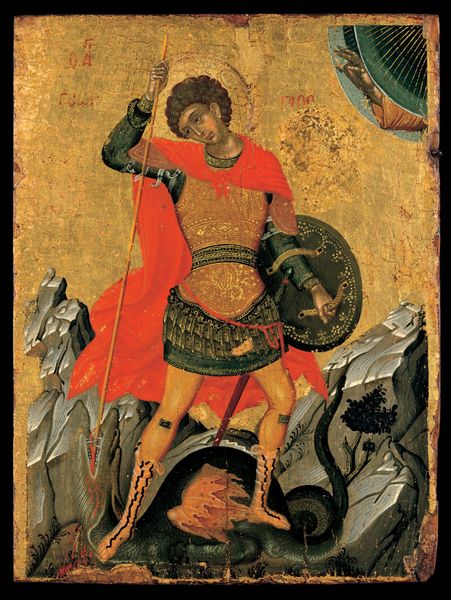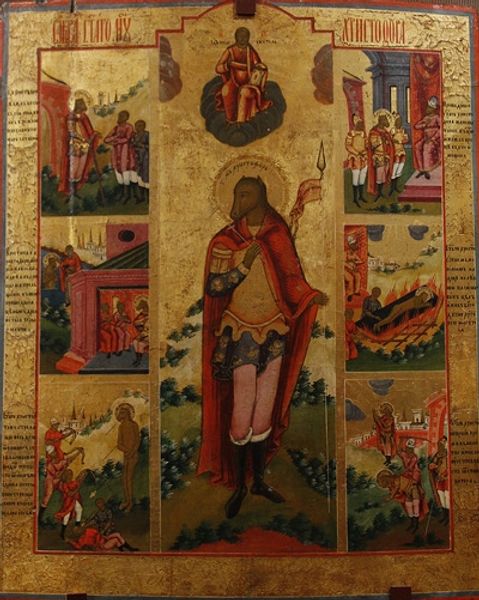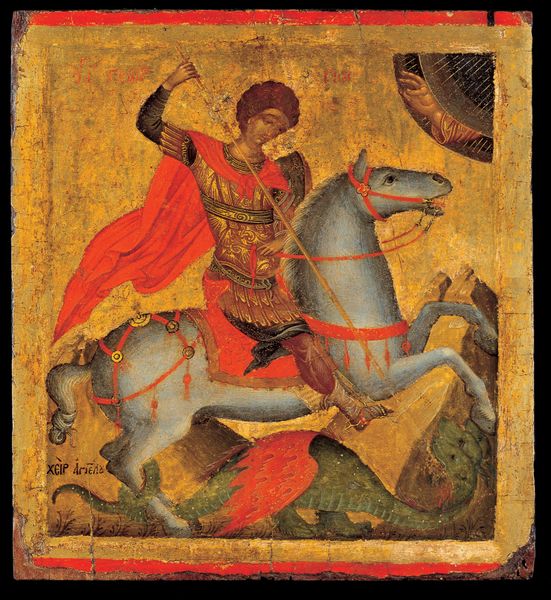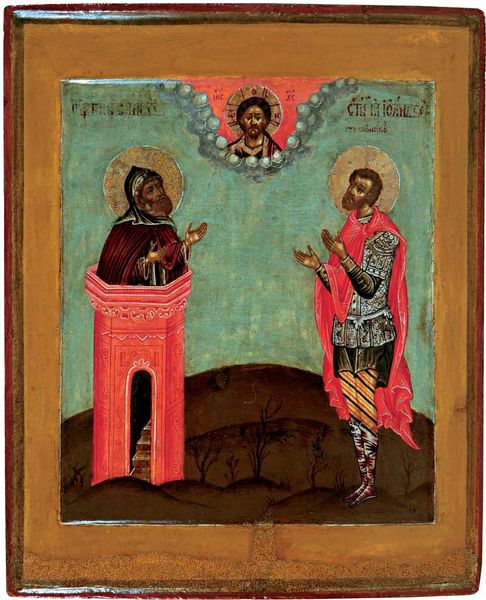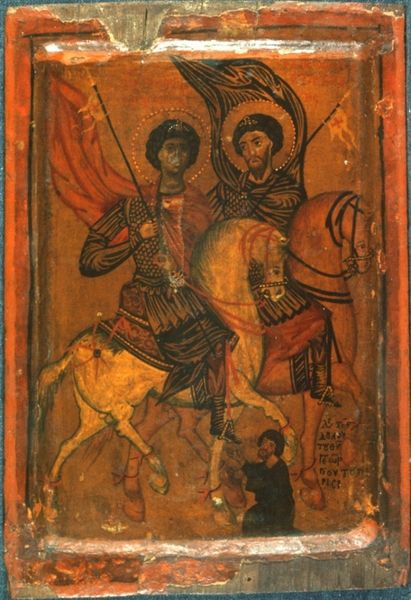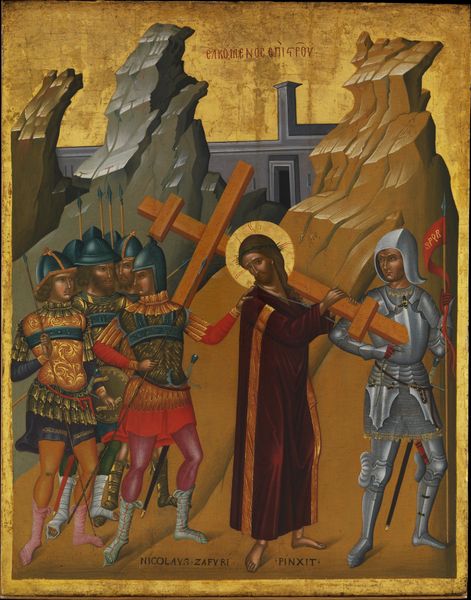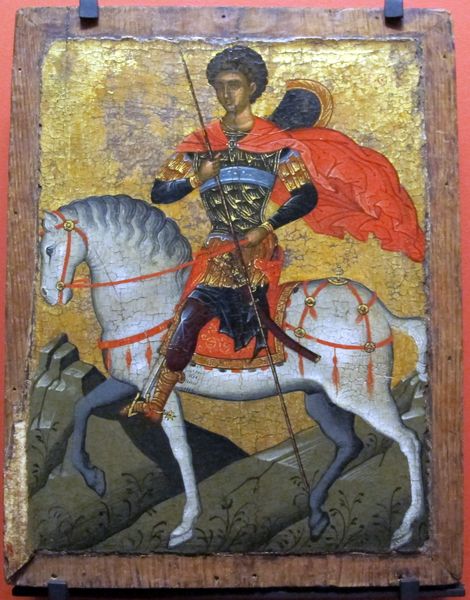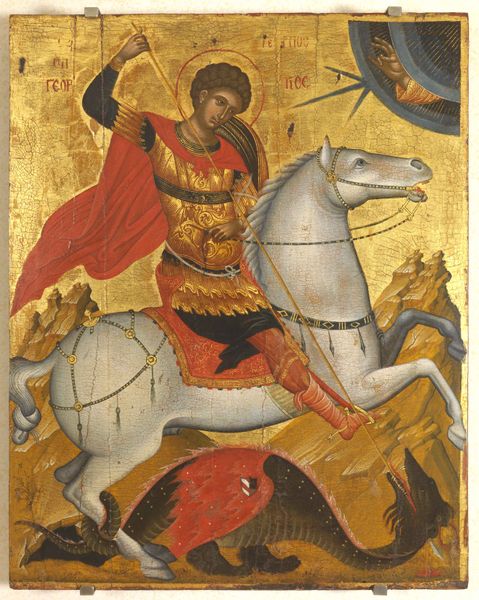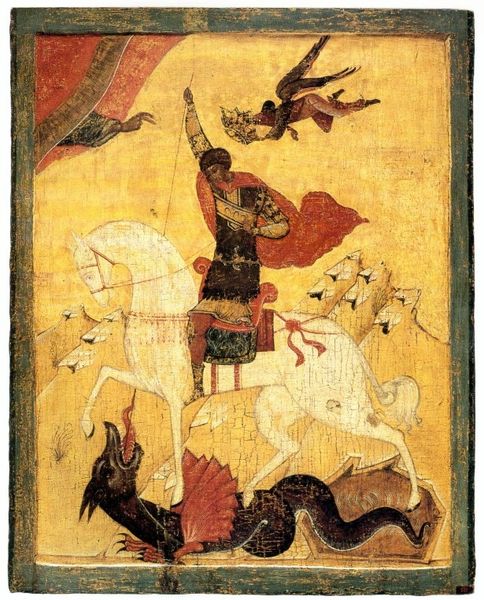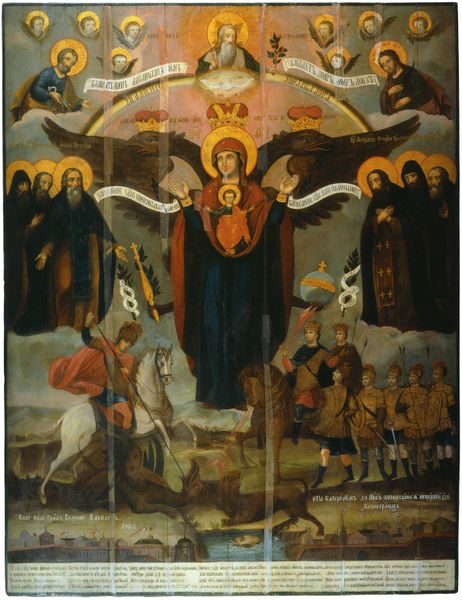
tempera, painting
#
byzantine-art
#
narrative-art
#
tempera
#
painting
#
figuration
#
oil painting
#
history-painting
Dimensions: 36 x 30.8 cm
Copyright: Orthodox Icons,Fair Use
Curator: Let’s turn our attention to “Saint Nikita slaying the demon,” an 1843 tempera on wood painting, currently residing here in the Russian Museum. It depicts the triumphant Saint Nikita, haloed, and in the act of vanquishing a dark demon beneath his feet. Editor: It strikes me immediately as a rather direct visual articulation of the struggle between good and evil, but done in a style that somehow feels…grounded? Not ethereal like some other iconographic work. Curator: Indeed. The Byzantine influence is palpable, particularly in the stylized figures and the hierarchical composition, positioning heavenly figures above the earthly realm. Observe the meticulous layering of pigments, especially in Nikita's garments, a visual dance between light and shadow to imply form, while note how flat the painting seems due to the Byzantine-inspired painting style. Editor: Yes, but let’s think about those pigments, and what that means. This wasn't just conjured from thin air. It was carefully crafted; labor went into grinding those colors, preparing the wood panel, applying the gold leaf. These processes connect the artwork back to tangible resources and skilled, physical effort. Curator: Certainly, the material presence is undeniable, particularly if we read it as symbolic. Consider how the gold leaf symbolizes divine light. The tempera itself, binding pigment to egg yolk, becomes more than just a medium—it evokes age-old techniques and rituals, endowing the icon with a venerated history, beyond just its narrative subject. Editor: And consider the audience! An icon such as this served as a practical and devotional item in everyday Orthodox life. While its symbolic vocabulary operated within prescribed bounds, this function situated "Saint Nikita" inside a much wider economic framework where it became something to both contemplate and purchase, not merely a detached aesthetic object. Curator: A crucial distinction. But even appreciating it primarily on the aesthetic plane, there’s such a visually compelling quality to the contrast between the warm tones and the tenebrous form of the demon that certainly provides a good understanding of the intended message. Editor: Absolutely, but perhaps understanding more about this artwork provides the context to better decode some of the techniques and purposes behind its composition and its role within a given devotional experience. Curator: A satisfyingly thorough approach that yields to diverse perspectives on this work. Editor: Indeed. A fitting conclusion to our own small examination of "Saint Nikita."
Comments
No comments
Be the first to comment and join the conversation on the ultimate creative platform.
